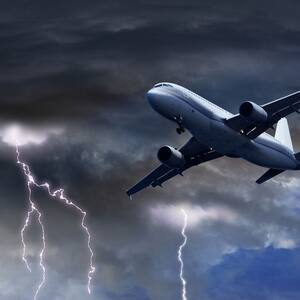Suspended 31,000 feet in the air in essentially a metal tube with wings, it makes sense why turbulence can be downright terrifying. In most instances, the air disturbance that causes a plane to shudder and bump is unnerving but totally harmless, aside from the odd spilt drink. While injury and death are extremely rare, they can occur, as a recent incident with Singapore Airlines indicated.
The Boeing 777 was flying from London to Singapore when severe turbulence hit. The aircraft, carrying 211 passengers and 18 crew members, diverted to Bangkok following the turbulence. A 73-year-old British man died, possibly from a heart attack and 20 passengers remain in intensive care for injuries sustained during the flight.

Commercial aviation is one of the safest forms of public mass transit in the world, however, those determined to avoid turbulence at all costs could take note of the world’s most turbulent routes. What flights are the most turbulent? After analysing 150,000 routes, the turbulence prediction website Turbli used historical data to rank routes according to the highest average turbulence in 2023. The study used “eddy dissipation rate”, which is defined as the measure of turbulence intensity.
An EDR of 0 to 20 is considered light, 20 to 40 is moderate and 40 to 80 is severe. Rates of 80 to 100 are extreme. Fortunately for Kiwis, none of the top 10 routes include destinations in Oceania.
The route with the highest average turbulence was Santiago to Bolivia’s Viru V.
















